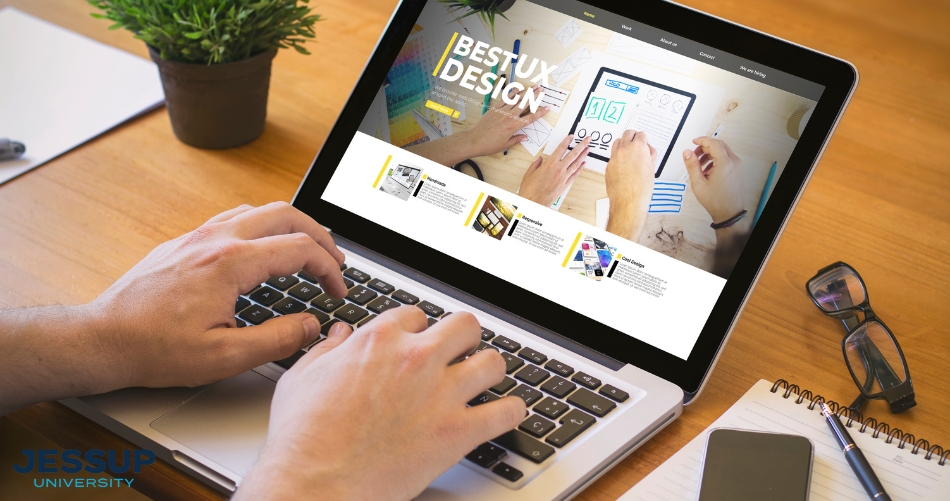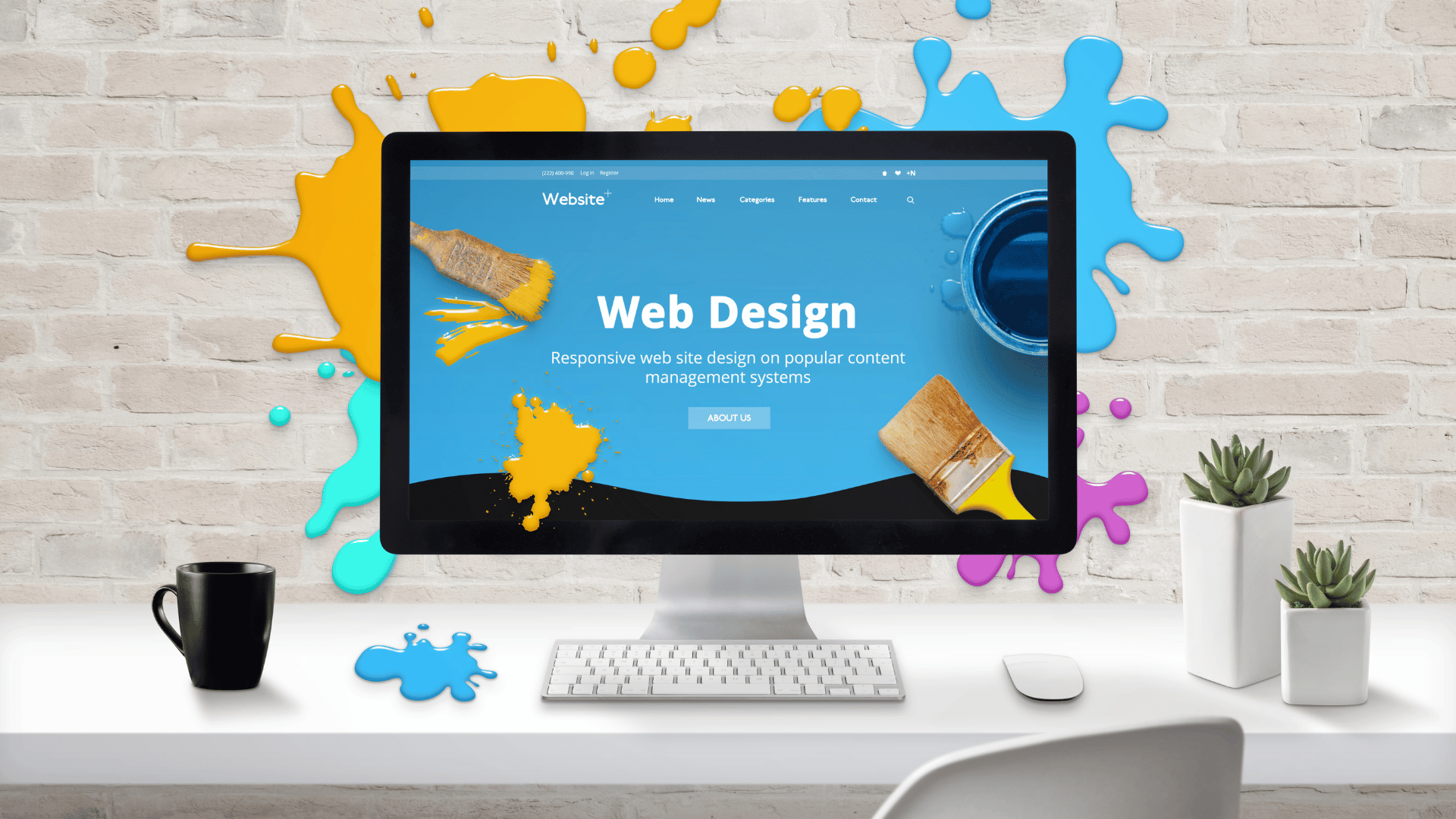The Value of User Experience in Efficient Web Design Techniques
User experience (UX) works as a cornerstone in reliable web design approaches. It forms exactly how individuals communicate with a website, influencing their complete satisfaction and likelihood of returning. A properly designed UX can boost interaction through intuitive navigation and responsive designs. Ignoring these aspects may lead to frustration and boosted bounce prices. Understanding the complexities of UX is necessary for developers intending to produce engaging digital experiences that reverberate with diverse audiences. What elements truly drive successful user involvement?
Recognizing User Experience and Its Influence On Layout
User experience (UX) is frequently regarded as a mere element of web layout, it essentially shapes just how customers interact with a website. UX incorporates all aspects of the user's interaction, consisting of functionality, access, and total fulfillment. A positive UX promotes involvement, encouraging individuals to discover the site and return in the future. On the other hand, a negative experience can cause stress, resulting in high bounce rates and lost possibilities for conversion.
Design components like web content, navigation, and layout organization play essential duties in shaping this experience. Efficient UX layout expects user requirements and preferences, making certain that details is aesthetically enticing and conveniently available. Furthermore, recognizing user habits via analytics can provide important insights, notifying design choices that boost functionality. Ultimately, a complete understanding of UX permits designers to develop sites that not just bring in users but also advertise purposeful communications that line up with company goals and user expectations.
Key Concepts of Efficient User Experience
Efficient user experience rests on a number of crucial principles that enhance website functionality and engagement. Instinctive navigation design, receptive format fundamentals, and the value of visual pecking order are vital elements that add to a seamless interaction between individuals and internet material. Comprehending these concepts allows developers to create more straightforward and easily accessible digital settings.
Instinctive Navigation Layout
When customers encounter a site, user-friendly navigating style works as a vital gateway to their total experience. Efficient navigating allows customers to easily locate the info they seek, enhancing their communication with the site. Trick principles consist of clear labeling, logical organization, and regular placement of navigation elements. Labels ought to be straightforward, allowing customers to predict the material they will certainly find. A well-structured hierarchy helps individuals recognize the relationship in between various areas, leading them through the website effortlessly. Furthermore, responsive food selections and quickly available links add to a liquid experience across devices. By prioritizing user-friendly navigating, designers can considerably reduce user disappointment and increase involvement, ultimately cultivating a positive assumption of the web site and its material.
Receptive Layout Fundamentals
A well-structured navigation system naturally causes the need for a receptive layout, which is necessary in today's diverse electronic landscape. A responsive layout guarantees that websites function flawlessly across different devices, including tablets, desktops, and smart devices. This flexibility boosts user experience by enabling material to be easily obtainable and visually coherent, regardless of display dimension. Trick concepts of receptive design include fluid grids, flexible photos, and media questions, which facilitate excellent viewing. Furthermore, focusing on touch-friendly elements boosts communication on smart phones. By applying a responsive layout, developers can suit customers' requirements, minimize bounce rates, and boost involvement. Inevitably, a well-executed receptive design promotes a positive user experience, motivating site visitors to check out the web site further.
Visual Hierarchy Relevance
Visual power structure plays an important function in assisting individuals with a site, making sure that important info catches their focus. By purposefully making use of dimension, shade, spacing, and contrast, developers can develop a clear path for users to comply with. Larger aspects typically draw the eye, suggesting their value, while contrasting shades can highlight contact us to action. Additionally, regular positioning and collection of relevant web content enhance comprehension, making navigating intuitive. Efficient use of visual hierarchy not only improves usability but additionally sustains the general aesthetic of the website, fostering a positive user experience. When users can conveniently determine the most essential info, they are most likely to involve with the material, resulting in raised contentment and communication with the website.
The Function of Use in Web Design
Functionality plays a crucial function in web design, specifically via navigating simpleness and adherence to access requirements. Reliable navigation enhances user complete satisfaction by permitting visitors to discover details promptly and without effort. On the other hand, conference ease of access criteria ensures that all users, regardless of their capacities, can efficiently communicate with the internet site.
Navigating Simplicity
Simplicity in navigating stands as a foundation of efficient web design, significantly influencing user experience. A streamlined navigating system permits individuals to discover details swiftly and intuitively, decreasing disappointment and improving contentment. Clear labeling and sensible framework are vital components, guiding individuals easily via the site. Redundant links or extremely complex menus can confuse customers, resulting in increased bounce prices. Additionally, mobile responsiveness has to be thought about, guaranteeing navigation stays straightforward throughout devices. Decreasing and focusing on important web pages mess even more supports user interaction. Efficient navigation not just promotes a favorable experience however additionally urges users to check out the website better, ultimately causing greater conversion prices. In this respect, navigating simplicity works as an essential factor in the general performance of web design methods.
Access Criteria
User engagement is considerably boosted when web sites abide by ease of access criteria, ensuring that all individuals, no matter their capabilities, can browse and connect successfully. Compliance with these requirements not just expands the target market but also improves general user fulfillment. Obtainable style incorporates features such as text choices for pictures, key-board navigating, and adequate color contrast, which promote use by people with handicaps. Furthermore, applying these standards can favorably impact seo (SEO) by boosting website structure and quality. As web design progresses, focusing on availability ends up being vital in fostering an inclusive electronic setting. By embracing these standards, designers add to a more equitable web, inevitably driving user loyalty and interaction.
Significance of Responsive Style for User Interaction
As consumers progressively access web sites with a variety of tools, the relevance of responsive style ends up being extremely important for involving customers properly. Responsive layout assurances that an internet site adjusts perfectly to various screen dimensions, offering an excellent watching experience regardless of the gadget utilized. This flexibility improves user interaction by assisting in easier navigation and interaction with web content.
When individuals encounter a site that is responsive, they are most likely to stay much longer, explore additionally, and return in the future. A well-designed responsive layout lessens the disappointment typically connected with zooming and scrolling on smaller screens, therefore decreasing bounce rates. Furthermore, receptive style can favorably influence internet search engine rankings, as search engines focus on mobile-friendly websites. In today's digital landscape, where mobile usage remains to increase, applying responsive style you can look here is not simply helpful, but important for keeping user engagement and assuring a positive experience throughout all gadgets.
Enhancing Load Times for Better User Contentment

To enhance load times, internet designers must prioritize enhancing photos, leveraging browser caching, and reducing HTTP demands. In addition, utilizing Content Delivery Networks (CDNs) can quicken content delivery by distributing it throughout various geographic areas. Streamlining code, such as pressing CSS and JavaScript documents, even more adds to much faster loading speeds.
Ultimately, a dedication to boosting load times not just enhances user satisfaction but also strengthens have a peek at these guys brand commitment and enhances the chance of repeat brows through. A swift, smooth experience is crucial for maintaining users and promoting positive interactions.
The Impact of Visual Power Structure on User Interaction
Aesthetic pecking order works as a necessary aspect in directing user interaction on an internet site. By organizing web content in a manner that prioritizes info visually, designers can affect just how customers browse and involve with a website. This pecking order is established through various design methods, including size, contrast, spacing, and shade. Bigger font styles or strong colors draw attention to crucial aspects, such as calls to activity or headings, while controlled shades and smaller font styles can indicate subservient information.
Effective visual hierarchy helps users promptly determine what is essential, decreasing cognitive load and enhancing usability. It permits for intuitive navigating, making it easier for customers to find what they require without frustration. As customers communicate with an internet site, a well-structured aesthetic hierarchy cultivates an extra satisfying experience, inevitably leading to greater involvement and conversion rates. Designers must prioritize these principles to create an user-centered and effective web atmosphere.
Gauging User Experience: Strategies and devices

Often Asked Questions
Just How Can I Enhance My Site's User Experience on a Budget?
To boost a website's user experience on a budget plan, one can optimize page lots speed, streamline navigating, execute receptive design, boost material clarity, and collect user comments for continuous improvements, ensuring a gratifying visitor experience.
What Prevail User Experience Blunders to Avoid in Web Design?
Typical user experience blunders in web design include cluttered layouts, poor navigation, slow-moving loading times, lack of mobile responsiveness, disregarding accessibility, inconsistent branding, and stopping working to focus on user comments - agency for web design. Each can greatly prevent overall website effectiveness
Just how Frequently Should I Update My Website for Better User Experience?
Web sites need to be updated consistently, preferably every few months, to preserve ideal user experience. Constant updates assist address functionality issues, revitalize web content, and adapt to altering user needs, making certain the site continues to be relevant and appealing.

Can User Experience Impact SEO Rankings on My Site?
User experience can substantially affect search engine optimization positions, as online search engine focus on sites that use smooth navigation, fast filling times, and appealing web content. A favorable user experience can bring about reduced bounce rates and greater search presence.
What Function Does Accessibility Play in User Experience Layout?
Ease of access plays an important function in user experience style by making sure that all people, regardless of capacities, can navigate and connect with a site effectively. This inclusivity enhances general fulfillment and interaction among diverse customers.
User experience (UX) is typically perceived as a simple element of web design, it basically forms exactly how customers communicate with a website. User interaction is substantially boosted when web sites adhere to accessibility criteria, making certain that all users, regardless of their abilities, can navigate and engage successfully. Measuring user experience (UX) is necessary for comprehending how efficiently a website satisfies the demands of its customers. Furthermore, usability screening, where genuine individuals navigate the website while viewers note problems, offers straight comments on user experience. Common user experience blunders in internet style consist of chaotic formats, poor navigating, slow loading times, lack of mobile responsiveness, disregarding ease of access, inconsistent branding, and stopping working check these guys out to prioritize user feedback.